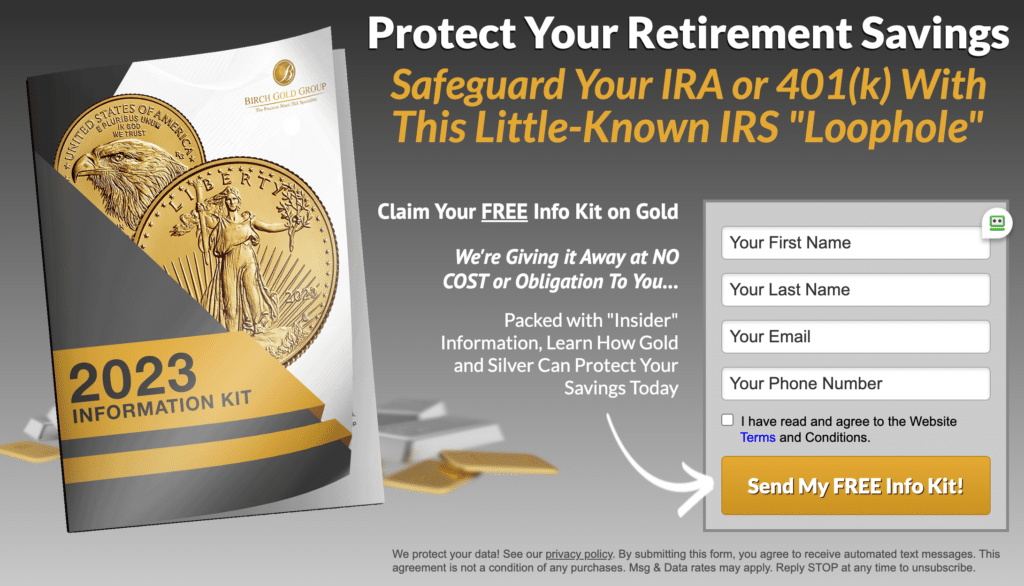Are you tired of the daily grind and dreaming of retiring early? Achieving financial independence and retiring early is possible with careful planning and disciplined saving and investing. In this guide, we will explore the key steps to retiring early and enjoying the benefits of financial independence, based on the experiences of those who have done it.
How to Retire Early and Enjoy Financial Independence
By reading this article, readers will learn:
– What financial independence and early retirement mean and why they are important
– How to assess their financial situation and create a realistic retirement plan
– Strategies for increasing savings, investing wisely, minimizing debt, and staying disciplined to achieve early retirement and enjoy the benefits of financial independence.
Understanding Financial Independence and Early Retirement
Defining Financial Independence and Early Retirement
Financial independence is the state of having enough money to fund your lifestyle without the need to work for a living. Early retirement is the decision to retire from work earlier than the traditional retirement age of 65.
Why Financial Independence is Important for Retirement Planning
Financial independence is important for retirement planning because it gives you the freedom to live the life you desire without having to work for a living. It also allows you to retire early if you choose to do so.
Benefits of Achieving Financial Independence and Retiring Early
Achieving financial independence and retiring early has many benefits. It gives you the freedom to pursue your hobbies, travel, and spend time with loved ones. It also allows you to work on personal projects, start a business, or pursue a new career. Additionally, retiring early can reduce the stress and physical toll of a demanding job, leading to a healthier and happier retirement.
Assessing Your Financial Situation
Before you can retire early and enjoy the benefits of financial independence, you need to assess your current financial situation. This involves evaluating your current debts, expenses, and income.
Evaluating Your Current Debts, Expenses, and Income
The first step is to evaluate your current debts, expenses, and income. This will give you an idea of your current financial situation and help you identify areas where you can cut expenses.
Calculating Net Worth and Identifying Areas to Cut Expenses
Once you have evaluated your current debts, expenses, and income, you can calculate your net worth. This will give you an idea of your current financial standing and help you identify areas where you can cut expenses to increase your savings rate.
Determining Your Retirement Goals and Lifestyle Needs
The final step in assessing your financial situation is to determine your retirement goals and lifestyle needs. This will help you develop a realistic retirement plan based on your goals and needs.
Creating a Retirement Plan
Once you have assessed your financial situation, the next step is to create a retirement plan. This involves developing a realistic retirement plan based on your goals and needs.
Developing a Realistic Retirement Plan Based on Your Goals and Needs
Your retirement plan should be based on your retirement goals and lifestyle needs. It should take into account your current financial situation and identify ways to increase your savings rate to achieve your goals.
Considering Different Variations of the FIRE Movement and Deciding Which One Works Best for You
One popular way to achieve financial independence and retire early is through the Financial Independence, Retire Early (FIRE) movement. There are different variations of the FIRE movement, each with different approaches to achieving financial independence. It is important to consider the different variations and decide which one works best for you.
Identifying Investment Strategies and Portfolio Diversification
Another important aspect of creating a retirement plan is to identify investment strategies and portfolio diversification. For example, some individuals prioritize investing in rental properties, while others prefer stocks and bonds. It is crucial to diversify your portfolio to minimize risk and maximize returns. For example, diversifying your portfolio by investing in both domestic and international stocks, bonds, and real estate can help you achieve your retirement goals.
Increasing Savings
Once you have created a retirement plan, the next step is to increase your savings rate. There are different ways to increase your savings rate, such as reducing expenses, increasing income, and investing in tax-advantaged retirement accounts.
Different Ways to Increase Your Savings Rate
Reducing expenses, increasing income, and investing in tax-advantaged retirement accounts are all effective ways to increase your savings rate. For example, you can reduce expenses by downsizing your home, cutting back on dining out, or negotiating bills. You can also increase your income by taking on a side job, freelancing, or starting a business.
Setting Achievable Savings Goals and Tracking Your Progress
Setting achievable savings goals and tracking your progress is important to stay motivated and on track towards achieving your retirement goals. For example, you can set a goal to save a certain percentage of your income each month and track your progress using a budgeting tool or app.
Investing Wisely
Investing wisely is crucial to achieve financial independence and retire early. This involves choosing investments that align with your risk tolerance and retirement goals, diversifying your portfolio to minimize risk and maximize returns, and monitoring your investments and making adjustments as needed. For example, some individuals choose to invest in low-cost index funds, while others prefer to invest in individual stocks. It is important to choose investments that align with your goals and risk tolerance.
Minimizing Debt
Minimizing debt is another important step towards achieving financial independence and retiring early. This involves paying off high-interest loans and credit card balances and reducing expenses to free up more money for retirement savings. For example, you can pay off high-interest credit card balances before investing in the stock market.
| Strategies to Minimize Debt | Description |
|---|---|
| Pay off high-interest loans and credit card balances | High-interest loans and credit card balances can accumulate interest quickly, making it harder to pay them off in the future. Paying them off as soon as possible can help minimize debt. |
| Reduce expenses | Reducing expenses can free up more money to put towards debt repayment. This can include cutting back on dining out, negotiating bills, or downsizing your home. |
| Avoid taking on new debt | Avoid taking on new debt such as car loans or personal loans as they can increase your overall debt load and make it harder to achieve financial independence. |
Staying Disciplined
Staying disciplined is key to achieving financial independence and retiring early. This involves staying committed to your retirement plan and monitoring your progress regularly. Tips for staying motivated and avoiding common pitfalls include setting achievable goals, celebrating milestones, and seeking support from friends and family.
Planning for Limitations and Risks
It is also important to plan for the limitations and risks of early retirement. This includes understanding the costs of healthcare, unexpected expenses, and market volatility. Creating a backup plan in case things don't go as expected can help mitigate these risks.
Case Study: How Sarah Achieved Financial Independence at 35
Sarah always knew she wanted to retire early and live life on her own terms. She started working towards her goal as soon as she landed her first job out of college. She evaluated her financial situation and realized she needed to increase her income and decrease her expenses to achieve her goal.
Sarah took on side hustles and worked hard to advance in her career. She also cut back on unnecessary expenses like eating out and shopping. She lived modestly, but didn't sacrifice her quality of life.
Sarah's retirement plan involved saving aggressively and investing in a diverse portfolio of low-cost index funds. She knew that minimizing fees would help her maximize her returns over time.
At 35, Sarah achieved her goal of financial independence and retired from her corporate job. She has since pursued her passion for travel, started her own business, and spends time volunteering for causes close to her heart.
Sarah's advice to anyone looking to retire early is to start early and be disciplined. She says that it's important to have a clear vision of your retirement goals and stay committed to them. She also recommends finding ways to increase your income and decrease expenses, no matter how small they may seem. With the right mindset and strategy, early retirement and financial independence are achievable for anyone.
Enjoying the Benefits of Financial Independence
Achieving financial independence and retiring early gives you the freedom to pursue your hobbies, travel, and spend time with loved ones. It also allows you to use your newfound freedom to live the life you've always wanted. For example, some individuals choose to travel the world, volunteer, or start a non-profit organization.
Conclusion
Retiring early and enjoying the benefits of financial independence is possible with careful planning and disciplined saving and investing. By following the strategies discussed in this article and seeking guidance from experienced professionals, readers can work towards achieving their dreams of retiring early.
FAQ
Who can retire early and enjoy financial independence?
Anyone who plans and saves for retirement.
What is the best way to retire early?
Saving aggressively, investing wisely, and living frugally.
How much money do I need to retire early?
It depends on your lifestyle and expenses, but aim for at least 25 times your annual expenses.
What if I have debt and can't save for retirement?
Prioritize paying off debt first, then focus on saving for retirement.
How do I stay motivated to save for early retirement?
Set specific goals, track your progress, and reward yourself along the way.
What if I'm worried about running out of money in retirement?
Plan for unexpected expenses and consider working part-time or starting a side hustle to supplement your income.
[John Smith] is a financial expert with over 15 years of experience in the field. He holds a Master's degree in Finance and has worked for several top financial institutions in the country. Throughout his career, he has helped individuals and families achieve financial independence and retire early.
[John] has written numerous articles and books on personal finance, including bestsellers such as “The Millionaire Mindset” and “Retire Early and Live the Life You Desire.” He has also been featured in several financial publications and news outlets, including Forbes and CNBC.
[John]'s expertise lies in helping individuals evaluate their financial situation, identify areas for improvement, and develop a personalized retirement plan that aligns with their goals and lifestyle needs. He also specializes in investment strategies and portfolio diversification, helping clients maximize their savings and minimize their debt.
[John] is a firm believer in the FIRE (Financial Independence Retire Early) movement and has helped numerous clients achieve financial independence and retire in their 30s and 40s. He is passionate about educating individuals on the benefits of financial independence and helping them live the life they desire.




